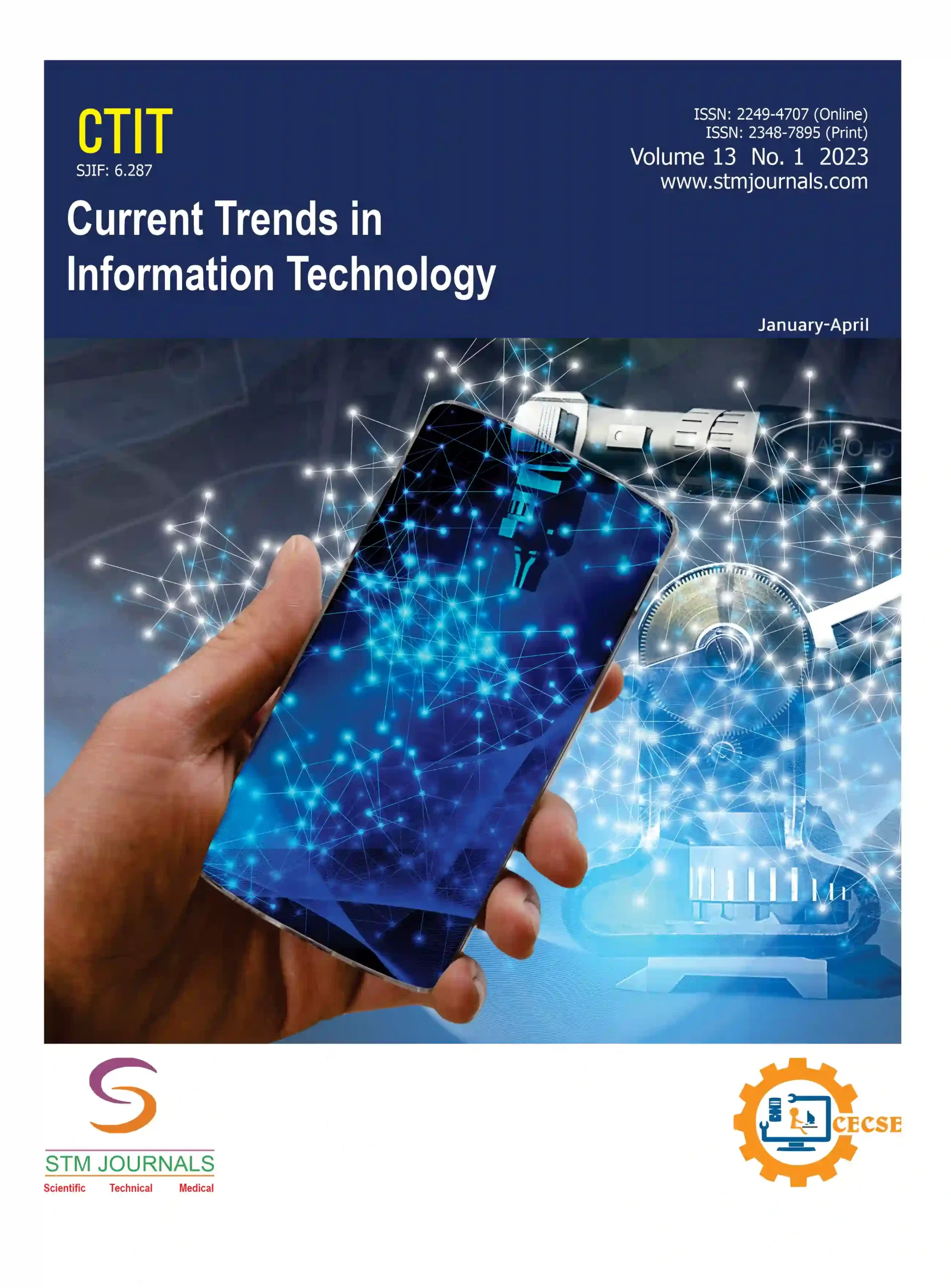R. Lingeswari,
S. Brindha,
- Research Scholar, Department of Computer Science, St. Peter’s Institute of Higher Education & Research, Chennai, Tamil Nadu, India
- Associate Professor, Department of Computer Applications, St. Peter’s Institute of Higher Education & Research, Chennai, Tamil Nadu, India
Abstract
This study discusses the use of machine learning algorithms to discover firms that are prone to money laundering. The purpose of this research is to develop, describe, and test a machine learning model for determining which bank transactions should be physically scrutinized for money laundering activities. To train a supervised machine learning model, three categories of historical data are required: legitimate “normal” transactions, transactions flagged as suspicious by the bank’s internal alert system, and instances of suspected money laundering reported to authorities. The model is trained to use various data sources, including background details of both the sender and receiver, past behaviors, and transaction records, to predict the likelihood that a new transaction warrants reporting. Our newly designed procedure outperforms the bank’s current methodology in terms of a fair assessment of performance. This research represents one of the scarce published anti-money laundering (AML) models for identifying suspicious transactions that has been tested on a dataset of realistic size. In addition, the paper provides a new performance indicator that was created particularly to compare the proposed solution against the bank’s existing anti-money laundering system. The greatest quality prediction results are obtained when a gradient boosting method is used instead of decision trees. The speed at which the optimal set might be produced was determined using the Hyperopt and Optuna Python package, and the quality of hyper parameter selection was studied. The model makes it possible to compile a list of the most crucial indicators for the early detection of money laundering and terrorist financing (ML/TF) organizations, and also provides appropriate suggestions for enhancing the compliance control process. Monetary laundering is a result of corruption, illegal activities, and organized crime, all of which have a social effect and have embroiled numerous groups, both directly and indirectly, in the laundering of illicit cash via a number of methods. This paper suggests employing a machine learning method to identify potentially suspicious activities among non-banking correspondents. A non-banking correspondent is a kind of financial agent that executes financial transactions on behalf of particular banking customers. Our results show that certain ways are more suited to this circumstance than others, and that these methodologies make it simpler to spot irregularities and suspicious transactions in this kind of financial intermediary.
Keywords: Anti-money laundering (AML), machine learning, terrorist financing, Non-bank correspondents, money laundering, transactions
[This article belongs to Current Trends in Information Technology ]
R. Lingeswari, S. Brindha. Money Laundering Transaction with Machine Learning. Current Trends in Information Technology. 2024; 14(02):1-15.
R. Lingeswari, S. Brindha. Money Laundering Transaction with Machine Learning. Current Trends in Information Technology. 2024; 14(02):1-15. Available from: https://journals.stmjournals.com/ctit/article=2024/view=152848
References
- Lingeswari R, Brindha S. Identification of Vulnerability During Cross Border Transaction in IoT. J Harbin Eng Univ. 2023 Sep; 44(9). ISSN-1006-7043.
- Jullum M, Løland A, Huseby RB, Ånonsen G, Lorentzen J. Detecting money laundering transactions with machine learning. J Money Laund Control. 2020 Jan 21; 23(1): 173–86.
- Brindha S, Ajisha T. An Efficient Ensemble Classifier for Heart Disease Diagnosis and early Prediction. Int J Recent Technol Eng (IJRTE). 2020 Nov; 9(4): 109–114. ISSN: 2277-3878,
- Rao AA, Kanchana V. Dynamic approach for detection of suspicious transactions in money laundering. Int J Eng Technol. 2018; 7(3): 10–3.
- Lingeswari R, Brindha Validation of Blockchain transaction in banking sector. Humanities and Social Science studies (HASS). 2023 Jan–Jun; 12(1) NO 09. ISSN 2319-829X
- Bayona-Rodríguez H. Money laundering in rural areas with illicit crops: empirical evidence for Colombia. Crime Law Soc Chang. 2019 Nov; 72(4): 387–417.
- Ali MZ, Shabbir MN, Liang X, Zhang Y, Hu T. Machine learning-based fault diagnosis for single-and multi-faults in induction motors using measured stator currents and vibration signals. IEEE Trans Ind Appl. 2019 Jan 27; 55(3): 2378–91.
- Brindha M, Sakthivel NK, Subasree S. Virtual Machine Dynamic Migration Strategy based Intelligent Flow Forecast Technique for Cloud Data Centers. Int J Emerg Technol Innov Res (IJETIR). 2019 Apr; 6(4): 368–76.
- Colladon AF, Remondi E. Using social network analysis to prevent money laundering. Expert Syst Appl. 2017 Jan 1; 67: 49–58.
- Lingeswari R, Brindha S. Analysing and classification of Attacks in Financial Transactions using Machine Learning. International Conference on Innovative Technologies and their Applications in Higher Education-Science. 2022 Oct. ISBN No. 978-93-92042-31-7
- Bergstra J, Bardenet R, Bengio Y, Kégl B. Algorithms for hyper-parameter optimization. Advances in neural information processing systems 24. 2011.
- Chen T, Guestrin C. Xgboost: A scalable tree boosting system. In Proceedings of the 22nd acm sigkdd international conference on knowledge discovery and data mining. 2016 Aug 13;785–794.
- Alexandre C, Balsa J. Client profiling for an anti-money laundering system. arXiv preprint arXiv:1510.00878. 2015 Oct 3.
- Bholowalia P, Kumar A. EBK-means: A clustering technique based on elbow method and k-means in WSN. Int J Comput Appl. 2014 Jan 1; 105(9): 17–24.
- Lacoste A, Larochelle H, Laviolette F, Marchand M. Sequential model-based ensemble optimization. arXiv preprint arXiv:1402.0796. 2014 Feb 4.
- Adankon MM, Cheriet M. Support vector machine. Encyclopedia of biometrics. Boston, MA: Springer; 2009; 1303–8.
- Bolton RJ, Hand DJ. Statistical fraud detection: A review. Stat Sci. 2002 Aug; 17(3): 235–55.
- Breiman L. Random Forests. Berkeley, CA: University of California; 2001 Jan. Available from: https://www.stat.berkeley.edu/~breiman/randomforest2001.pdf

Current Trends in Information Technology
| Volume | 14 |
| Issue | 02 |
| Received | 29/02/2024 |
| Accepted | 25/04/2024 |
| Published | 03/07/2024 |
PlumX Metrics
